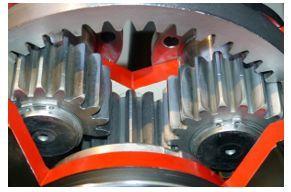Let’s test your knowledge about confined spaces. What should be the oxygen percentage inside a confined space?
a – between 10.5% and 19.5%,
b – between 19.5% and 23%,
c – between 22.5% and 26%,
d – between 16.5% and 19.5%.
Check the correct answer below.
1. What’s a Confined Space?
Many confined spaces are obvious, such as:
- manholes,
- boilers,
- tunnels,
- wells,
- storage tanks,
- vats,
- silos,
- trenches,
- Etc.
– But some aren’t so easily too recognized. So to ensure that you comply with the confined space requirements, you should be familiar with how your OHS regulations define “confined space” and identify all parts of your workplace that meet this definition. In general, the OHS regulations consider an area to be a confined space if it has these four characteristics:
- Is enclosed or partially enclosed;
- Isn’t designed or intended for continuous human occupancy but is large enough for a worker to enter to perform work;
- Has restricted or limited means of entrance and exit; and
- Is or may become hazardous to anyone entering it because of its design, construction, location, atmosphere, materials or substances in it, work done in it, or other conditions.
These characteristics can change but those are internationally accepted to identify a “confined space”.
2. Why Are Confined Spaces So Hazardous?
Confined spaces are so dangerous because many of the hazards they can contain aren’t easily seen, smelled, heard, or felt—making it difficult to protect workers from them. For example, confined spaces can be oxygen-deficient and pose a serious threat to workers who may not even realize they’re at risk until it’s too late. And even if workers in confined spaces become aware of a hazard, the limited means of exit can prevent them from escaping in time. In addition, the walls of some confined spaces, such as trenches, pose the risk of collapse if they’re not properly shored.
3. Is required to have a Confined Space program or procedure?
In some countries or regions, a confined space program or procedures is required by local law or regulation, but even if in the place you are watching this video this program/procedure it’s not legally required, as an international best practice you should have it in your organization or site.
4. What a confined space program/procedure should cover?
The requirements for a confined space program depend on where you are located, as referred to in the previous question. But has a pretty comprehensive list that serves as a good baseline, especially for employers in locations where this program is not required. This confined space program must include an assignment of responsibilities and a list of each confined space or group of similar spaces and a hazard assessment of those spaces. In addition, the program must include written safe work procedures for entry into and work in the confined space that address, where applicable:
- Identification and entry permits;
- Lockout and isolation;
- Verification and testing;
- Cleaning, purging, venting or inerting;
- Ventilation;
- Standby persons;
- Rescue;
- Lifelines, harnesses, and lifting equipment;
- PPE and other precautions; and
- Coordination of work activities.
5. What is a Confined Space attendant?
One of the safety measures that must be in place is the use of a confined space attendant—also called a standby person/worker or sentinel — who is assigned to stay outside of the space and monitor the work inside to ensure the safety of the workers in the space.
You should post an attendant at or near the entrance to a confined space. Workers assigned to this position must be “competent” and get appropriate training.
Their duties typically include:
- Monitoring the work in the confined space;
- Keeping track of and communicating with the workers inside;
- Controlling their lifelines; and
- Taking appropriate steps in an emergency.
It’s critical that confined space attendants don’t leave the confined space unattended, enter the confined space, or do other work that distracts them from their duties as attendants. You should also ensure attendants have all necessary equipment, such as an alarm or other means of summoning assistance in an emergency.
6. What is an Entry Permit?
The OHS laws or regulations in some locations require employers to use entry permits to limit workers’ access to confined spaces. An entry permit lists critical safety information such as the workers’ qualifications and the PPE required for the work. Under an entry permit system, a worker isn’t allowed into a confined space unless a supervisor has reviewed the entry permit to verify that it’s complete and accurate.
Even if in your location the local law or regulations doesn’t specifically require the use of an entry permit system for confined spaces, there are still be highly recommended to use one anyway.
In addition, an entry permit system creates a written record of the steps you took to comply with the confined space requirements.
Permits document the fact that someone assessed the risks in the confined space, explained those risks to workers, and gave them other appropriate safety instructions before they were allowed to enter the space.
If an accident happens despite your efforts and the company to comply with the entry requirements, the permits may help to prove due diligence by showing the reasonable steps it took to protect workers.
7. What information should an entry permit contain?
In some world locations where the law or local regulation required an entry permit usually, that legislation spells out the information the permit must include. Although there are some differences, entry permits should generally include the following information:
- The location of the confined space;
- The name of each worker who enters the space;
- When each worker entered and exited the space;
- The reason for their entry, such as the work to be performed;
- The time period for which the permit is valid;
- The name of the confined space attendant, if any;
- The equipment required for entry and rescue, and verification that it’s in good working order;
- The results of atmospheric testing, if any was done; and
- The necessary precautions to take in the confined space, including ventilation and required PPE.
8. Are there requirements for handling confined space emergencies?
It’s estimated that 60% of the workers killed in confined spaces were coming to the rescue of the workers inside.
Even if the local legislation does not require it’s a good practice to have in place a specific confined space emergency.
The OHS regulations generally don’t specify what confined space emergency plans should include beyond requiring plans to address rescue procedures, PPE and the emergency equipment to be used by rescuers. A good rule of thumb, however, is that an effective confined space emergency plan includes:
- All hazards in the confined space that were previously identified in a risk assessment;
- The dimensions of the space;
- The location of entry and exit points;
- Any obstacles to removing an injured worker;
- Rescue equipment required and how that equipment will be brought to the site, set up and operated;
- PPE for rescuers, including appropriate respirators;
- Communication between workers, rescuers, the confined space attendant, and the supervisor;
- Procedures to follow immediately after an incident, including when rescue team members performing specific roles will be deployed;
- Possible hazards that may arise during a rescue, appropriate evaluation of these hazards and control methods for them;
- The types of rescue that are options, such as self-rescue, external rescue or entry rescue, and when each will be used;
- Rescue methods for a worker who’s unconscious, unresponsive, or distressed; and
- The emergency medical care and materials that’ll be available to treat the injured on site.
9. Are there special training requirements for workers who work in Confined Spaces?
All workers who work in confined spaces must get training specific to the hazards, safety measures, and other requirements for such work.
In some world locations, for example in the Middle East, it’s required that the training be provided by a 3rd party certified training provider. And this training needs to be repeated in a period of time usually valid for 1 to 3 years depending on the country you are working in.
10. What is the permit duration?
A permit is only valid for one shift. For a permit to be renewed, the following conditions shall be met before each reentry into the confined space:
- Atmospheric testing shall be conducted, and the results should be within acceptable limits. If atmospheric test results are not within acceptable limits, precautions to protect entrants against the hazards should be addressed on the permit and should be in place.
- EHS shall verify that all precautions and other measures called for on the permit are still in effect.
- Only operations or work originally approved on the permit shall be conducted in the confined space.
A new permit shall be issued, or the original permit will be reissued if possible, whenever changing work conditions or work activities introduce new hazards into the confined space.
In summary, confined spaces are extremely hazarded and it’s important that all safety measures are in place before someone enters the confined space, and the best way to do it is to have in place a confined space program that should include an entry permit system.
You can download the questions and answers for free:
The correct answer is the answer b.
a – between 10.5% and 19.5%,
b – between 19.5% and 23%,
c – between 22.5% and 26%,
d – between 16.5% and 19.5%.
This percentage can change in some places but its always around the percentages from 19% to 23%







